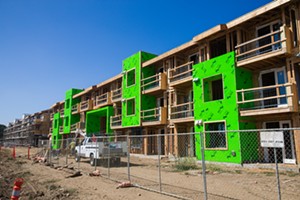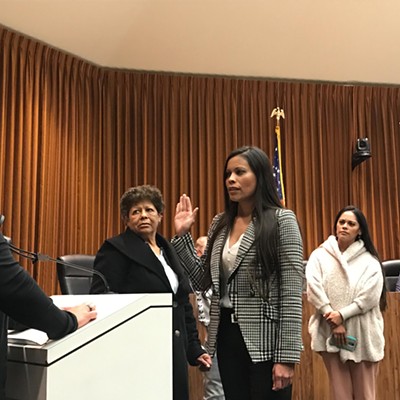There’s still a lot of work to do, Santa Barbara County Planning and Development Director Lisa Plowman told the Sun, now that the Santa Barbara County Board of Supervisors approved the 2023-2031 state-required Housing Element.
But, Plowman added, her staff is relieved.

“The state mandate is the headline, but really the issue that our community faces is a substantial need for housing for the lower incomes and moderate income, and we have not been building a lot of housing in our county, particularly in South County, for the last couple of decades,” Plowman said.
The Santa Barbara County Board of Supervisors voted 3-2 (with 4th District Supervisor Bob Nelson and 2nd District Supervisor Laura Capps dissenting) during the Dec. 5 meeting to approve the Housing Element, allowing Plowman and her staff to move forward with the rezoning process, which aims to ensure there’s ample space for housing development.
Each jurisdiction in the state is required to revamp its Housing Element every eight years to address housing needs and identify new housing development potential. The California Department of Housing and Community Development wants Santa Barbara County to have the space to build 5,664 units in its unincorporated areas by the end of this cycle (2023-31) to meet the housing need—which is nearly 10 times larger than the previous cycle’s allocation of 661 units.
“It’s been a long process, and it’s been quite complex,” Plowman told the Sun. “I’m proud of our document and the team. I think they did a great job, and we did really well working with the state and I’m pleased we’re at the place we are and we can move forward to the next phase of the process.”
Next year, the county will release a programmatic environmental impact report (EIR) that analyzes the areas that will need to be rezoned for the Housing Element, discuss its potential impacts, analyzes potential community needs, and gives the public the opportunity to comment, she added. Planning and Development will go back to the Planning Commission in March and to supervisors in late spring to discuss the rezones and the EIR.
After those hearings, the team will need to enact the programs and policies within the Housing Element document, monitor unit counts, and give the housing department annual updates on the county’s progress.
“We will spend the next four or five years implementing these things,” Plowman said. “We will need nearly three full-time employees just working on implementing the housing programs. … Those programs are really important to meet the needs of our community, so we will be spending quite a bit of time on those.”
While the state doesn’t mandate that the housing gets built within the housing element cycle, the state requires the county to lower barriers to make it easier for developers to go through the permitting process, she said. Plowman added that the element does simplify the permitting process for housing projects.
During the Dec. 5 meeting, Supervisor Nelson said he voted against approving the Housing Element because the document had too many policies that weren’t vetted or discussed by the supervisors.
“What staff has put in the Housing Element is a little bit too much for me at this point. There’s too much policy in there that is prescribing this board to future actions that I’m not there yet; future staffing that I’m not confident can deliver on some of these programs,” Nelson said.
Supervisor Capps, took issue with the element’s policies and the decision to place “75 percent of South Coast units” in the Goleta Valley on ag land.
“This really moves us forward in a lot of directions that I don’t believe were directed by the board,” Capps said during the meeting. “This rezone process, it is not the flexibility that is being advertised. These decisions are going to last forever, the ramifications are profound.”
Plowman told the Sun that her team worked really hard to address the supervisors’ concerns during the meeting and they will continue to do so in future hearings to find solutions.
“It’s a big document and it commits the county to a lot, and that’s what you have to do to get state compliance,” Plowman said.










